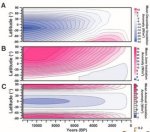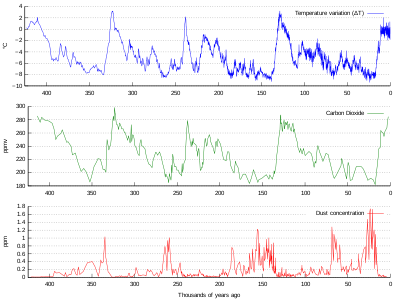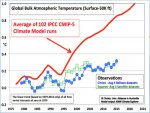Well if it was warmer 800 years ago and that was natural why isn't this then ? The ice core records from both poles show today is quite unexeptional even over just the last 4000 years as you have been shown multiple times now
There is no way you could possibly know that. The LIA was one of the coldest periods in the last 10,000 years so its little wonder then that the natural recovery from it we see today should be equally pronounced
This is a natural phenomenon that has been hijacked by those with poltical agendas like yours
Why do think that constantly playing dumb and throwing out empty slander is going to accomplish anything?
Over the past million-plus years, the interglacial periods have been geologically brief warm periods caused by orbital variation, which 'soon' give way to fresh glacial periods. You know that perfectly well, but for some reason you think that pretending to be ignorant is a good way to make an argument. During the deglaciation period, warming oceans and melting ice release CO2 and CH4, which further accelerate the warming process; hence the return to glacial conditions has consistently been noticeably slower than the initial warming.
(From Wikipedia)
The Holocene thermal maximum (or
Holocene climatic optimum) occurred around 9,000 to 5,000 years ago. Surface insolation actually peaked nine or ten thousand years ago, and since then the planet has been gradually receiving less solar energy in the long term, particularly in the Northern Hemisphere where the larger land-masses are more responsive to climatic forcing.
(From memory that's also why the previous interglacial was warmer than both this one and the one before it: 125,000 years ago the Northern Hemisphere was closest to the sun during summer, whereas now the opposite is the case.)
 (From Marcott et al 2013)
(From Marcott et al 2013)
Hence, over the past 5,000 years or more the long- long-term trend has been global cooling as the planet moves back towards another glacial period. There has been plenty of shorter-term variation, such as the unusually warm medieval period and the cooler than usual Little Ice Age coincident with the sun's Maunder Minimum. But solar activity
peaked in 1959 and has been generally declining since then. Natural variation can't account for much if any of the past 50 years' increasing global temperatures, and can only partially explain the 60 years before that.
The resolution of the proxies in
Marcott et al 2013 is too low to capture century-scale temperature swings, but shows clearly the long-term Holocene trend:

Again,
all of this is stuff that you know, or should know, from your years on the forum. So why play dumb about it? What did you hope to accomplish? Proxy reconstructions covering only
the last thousand or two thousand years have much higher resolutions, and they show that while there've been plenty of hemispheric and possibly even global temperature swings over two or three decades which were about as rapid as the
early 20th century warming, at least, there's been nothing to match more than 0.9 degrees' warming over 100+ years, as we've seen recently. On the other hand this dramatic interruption of the long-term trend, continuing even as solar activity and other natural forcings have declined, is exactly what's expected from the fact that greenhouse gas concentrations been increasing so far above natural variation due to human activity. Where correlation with other known causal factors is low or even negative, the correlation between temperature and the main anthropogenic GHG has been extremely strong, particularly in the past half-century as anthropogenic forcings have come to play a larger role compared with natural variation:

(Data available on
Google sheets)





